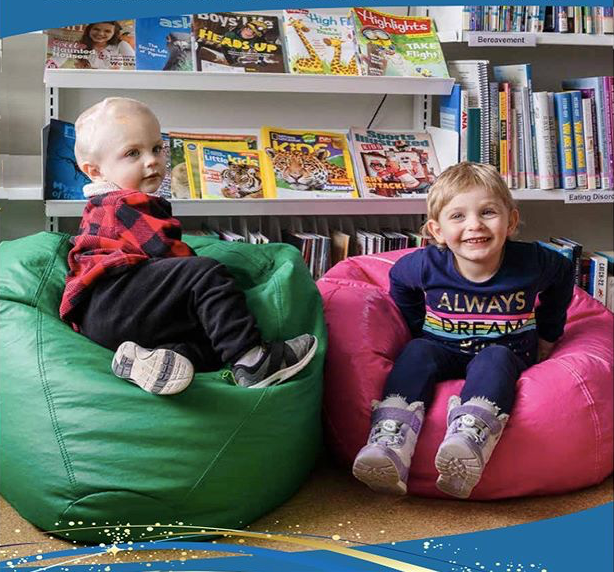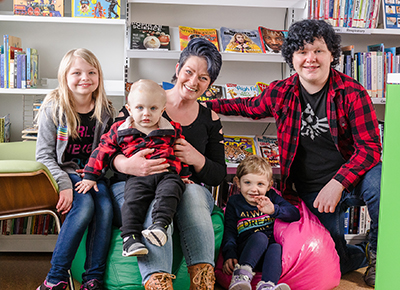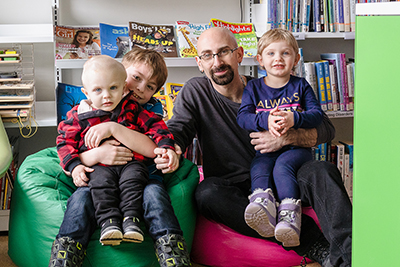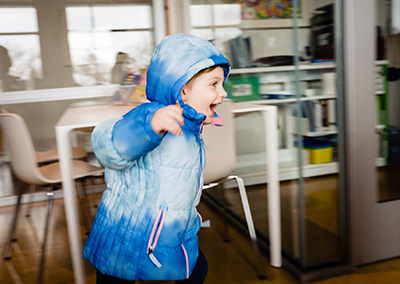Luke & Lilly McDonald

Effective Care-Coordination Helps Siblings Recover from Horrific Accident
On a nice a summer evening last July, Jamie McDonald was walking his two kids, Luke, 1, and Lilly, 2, in a wagon to the Wegmans on Lyell Avenue in Gates. As they made their way through a parking lot across the street from the store, Lilly said “dada” to get Jamie’s attention, and he noticed that she had dropped her pink bunny on the ground.
Jamie picked the bunny up and started wheeling the kids back to the crosswalk. He then looked up and noticed that a car was headed toward the curb, straight at him and the kids. He yanked the wagon as quick as he could, but the car was too fast; it hit the wagon and dragged Luke and Lilly 50 feet into the parking lot.
Jamie sprang into action. “I ran to the car as fast as possible on my hands and knees to see if the kids were ok, saw that their eyes were open, and tried lifting the car.” A nearby Samaritan called an ambulance, and helped calm Jamie down while the Emergency Medical Services (EMS) team was en route.
The EMS team arrived and found that both kids were still breathing on their own. They had survived the initial horrific impact, but the challenges were just beginning.
While they we being transported — Jamie in one ambulance with Lilly, Luke in another — both kids started showing signs of decline and were put on ventilators when they arrived at the hospital for stabilization, initial assessment, and imaging.
Two Complex — and Urgent — Challenges

Sister Abbie, brother Aiden, and mother Candace with Luke and Lilly
Upon assessment, both Luke and Lilly had internal injuries, broken bones, and multiple lacerations, but it became clear that both were in life-threatening condition for two different reasons.
Luke had suffered a fractured skull, a significant head injury, and huge lacerations. An immediate operation was needed to remove the gravel and glass that had entered his skin, skull and eye.
Fortunately, Lilly did not suffer a significant head injury, but her condition was even more precarious. In addition to her extremely deep shoulder wound, she had injured her adrenal glands, which produce a life-sustaining hormone, epinephrine.
“Epinephrine is produced in response to stress. As a result, her body was not able to respond to the injury the same way Luke’s was,” said Jake Deines, M.D. associate professor in the Division of Pediatric Critical Care and one of the ICU physicians who cared for Luke and Lilly. As a result, Lilly’s life was at risk due to complete cardiovascular failure. “We needed very aggressive treatment of her low blood pressure, exaggerated heart rate, and poor circulation of blood.”
Both of their cases were incredibly complicated and required immediate coordination of a huge team of medical providers, including pediatric surgeons for orthopaedics, trauma, neuro, plastic, and ophthalmology.
Fortunately, the Pediatric ICU was prepared. “All of these very specialized services were immediately available here at Golisano Children’s Hospital,” said Deines, “in addition to performing the life-sustaining therapies in the ICU, we coordinate all of the teams and function as a quarterback so dozens of team members can act in a unified way.”
Treatment and Recovery

Brother Zach, and father Jamie, with Luke and Lilly McDonald
The critical care team engaged in a step-by-step process to manage both Luke’s and Lilly’s conditions.
“In spite of being involved in the same accident, they required very unique therapies — Luke needing mostly neurotrauma care, and Lilliana needing mostly shock and circulation support,” said Deines.
Luke first received neuro and plastic surgery, where they washed out the glass and gravel debris in his head and placed a monitor inside of his brain tissue to measure for swelling and increased pressure on his brain.
Lilly, on the other hand, needed mostly circulation support to boost her body’s stress reaction. Her caregivers put her on a continuous epinephrine drip to stabilize her and performed frequent blood studies and exams to ensure her injury hadn’t affected her in ways they didn’t anticipate.
Both Luke and Lilly were given pain medications and placed under sedation to minimize any distress, and ensure they wouldn’t remember the harrowing experience. Additionally, both were given antibiotics to prevent infections from the open wounds.
While this was happening, the GCH team did everything in their power to meet the McDonald family’s needs during the process.
“We focus on family-centered care,” said Deines, “we involve the families from the first moment they arrive and provide consistent updates and explanations of the care we’re giving. We also enlist the help of our wonderful social workers and other support groups.”
Considering the emotional trauma he had just experienced, this interaction was critical for Jamie, and he credits the GCH team for keeping him calm and communicating regularly. “They did a great job coming out and keeping me updated on what was going on, and letting me know when my kids were good.”
McDonald particularly credits his assigned social worker, Jeff Rideout, for providing an emotional outlet for the family during the process and for being helpful with day-to-day needs such as parking passes. “He was there day in and day out checking in with us,” said Jamie.
Fortunately for Luke and Lilly, the surgeries were successful and their recoveries were relatively quick. After surgery, Luke got his ventilator tube out within a week, and Lilly had hers removed a few days later. They both were able to be transferred from the ICU several days afterward.
“The general pediatric unit had a large-shared room where the siblings could be together,” said Deines, “I visited them before they were discharged. Luke was throwing a ball, and Lilly was laughing. The progress they made was fantastic.”
The Road Back
 After being discharged from Golisano Children’s Hospital, both Luke and Lilly spent a few weeks in long-term care before heading home. Overall, they spent only a month at the hospital after the initial injuries.
After being discharged from Golisano Children’s Hospital, both Luke and Lilly spent a few weeks in long-term care before heading home. Overall, they spent only a month at the hospital after the initial injuries.
The work is yet to be complete, however: Both children have been going to inpatient rehab. Lilly’s shoulder wound and burn rash on her leg are in the process of healing, and Luke has had several surgeries to minimize the long-term effects of his head injury, and will need an eventual procedure to replace the missing piece of his skull. In addition, he will need skin grafts to help his hair grow back.
Despite these challenges, there is a strong potential for a full recovery for both children. Considering that both came simultaneously and required very different therapies, it is remarkable that they recovered so quickly from what could’ve easily been a fatal injury, according to Deines.
“We focus on life-sustaining therapies and we rely on the team we have, which includes an incredible group of nurses who are highly trained in pediatric intensive care, and an amazing group of fellows and residents, specialists and sub-specialists,” he said, “the outcome could’ve been different, but thanks to everyone involved, it’s a happy ending.”